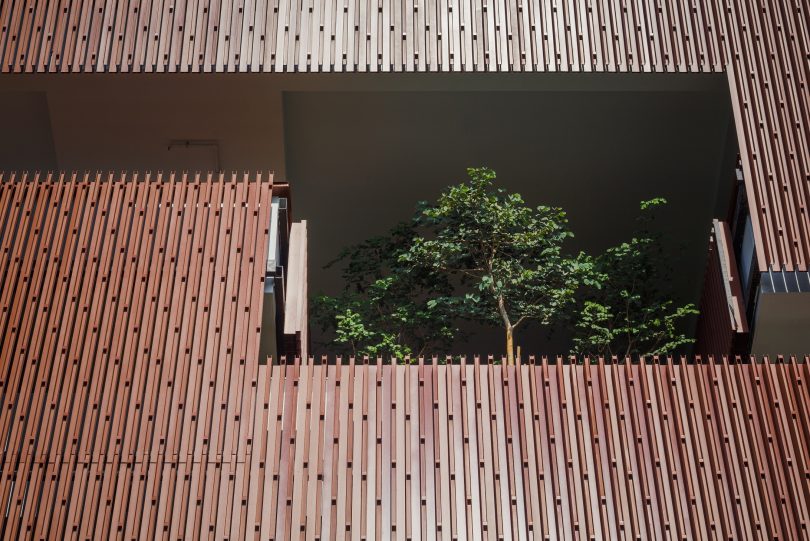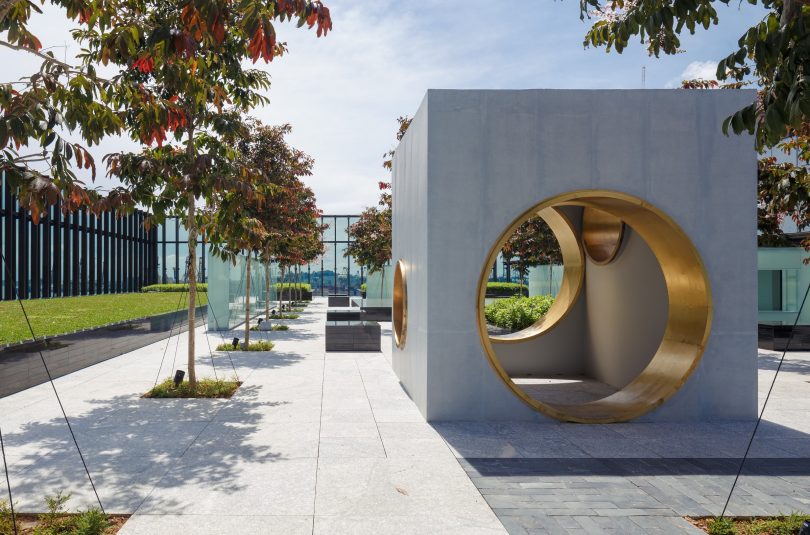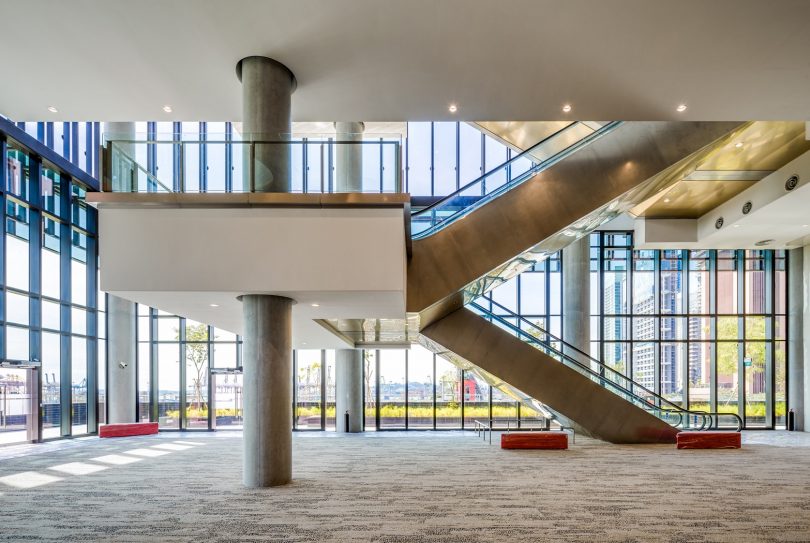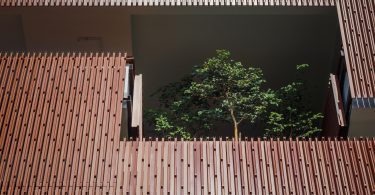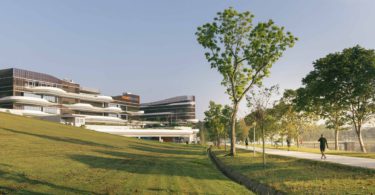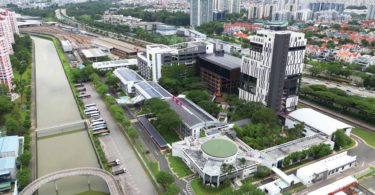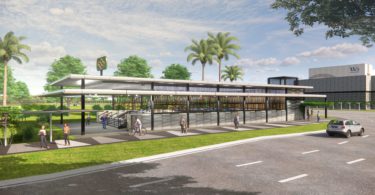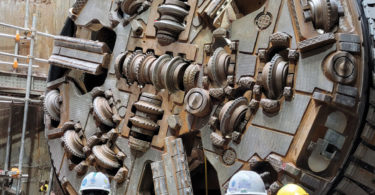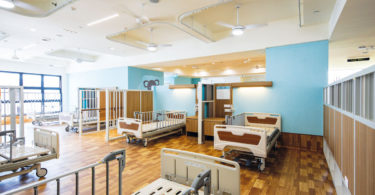The Singapore Chinese Cultural Centre (SCCC) is a new civic and community institution, spearheaded by the Singapore Federation of Chinese Clans Associations (SFCCA), for the promotion of traditional and contemporary Chinese arts and culture locally.
CONTRIBUTING TO A VIBRANT URBAN FABRIC
SCCC will house an array of civic and cultural facilities such as interactive exhibition spaces, visual art gallery, a multipurpose hall, recital room, reading room, practice and rehearsal room and a 530-seat auditorium. Other functions within the centre include office spaces for SCCC, Business China, clans and agencies; 270 car park lots; and F&B components. The SCCC presents itself as a platform for the multicultural identities of Singapore—a place for sociocultural interaction, networking and bonding.
Set in the bustling central business district along Shenton Way with the Marina Bay skyline as a backdrop, SCCC will be located on a site adjacent to the Singapore Conference Hall (SCH), which is a landmark gazetted as a national monument in 2010 and home to the Singapore Chinese Orchestra. Seen as a cultural hub for the Chinese community, both buildings will form a distinctive synergy through their programmes. Contextually sensitive, SCCC’s design complements the architecturally striking SCH. The site in itself can be interpreted as a confluence of numerous activities that contributes to an urban fabric that is both vibrant and dynamic.
SUBTLE ARCHITECTURE
Given the site context and the buildings around the site, SCCC’s presence would further enhance the richness that already exists within the environment. The monumental form of the adjacent Singapore Conference Hall building provides an opportunity for SCCC to subtly insert itself through the creation of a shared street block. It was designed intentionally as a respectful complement to the conference hall, which is a powerful compositional form expressing the clarity of its programme, planning and articulation.
SCCC adopted a clean and subtle approach in architecture, thereby forming a coherent composition with its neighbour, while quietly asserting itself through its programmatic functions and planning.
The design for SCCC begins with the identification of SCH’s central axis, which starts from its landscaped walkway that fronts Shenton Way and moves through the building along a row of free-standing columns in the atrium space. This central axis was adopted by SCCC and continues its way into the new building. The establishment of this axis acts as a respectful gesture towards the conference hall and serves as its central core in planning. Programmes—both spatial and functional—are aligned with this axial point, forming a harmonious sequence that respects the architectural articulation of the conference hall.
In terms of structure, SCCC obeys a framework of columns that parallels the modularity of traditional Chinese architecture. This structural grid configuration gives the advantage of easy planning, allowing spaces and programmes to be ‘stacked’ on top of one another, and provides a form that is clear and coherent at the same time.
ELEMENTS OF CHINESE ARCHITECTURE
The use of order was applied in the design. Traditional Chinese architecture is known for its symmetry and establishment of hierarchy. Important buildings have a three-tier division: firstly, a base that elevates the building and connects it to the ground; secondly, a body that houses the functions; and thirdly, a crown that shelters the building and connects it with the sky. SCCC adopted this three-tier division in its building massing, with a two-storey ‘urban living room’ as the base that connects it to the city, a podium body from the third to sixth storeys that houses the programmes and car park, and a glass-box crown where cultural performances and activities are celebrated.
Although the principles of Chinese architecture are based on order, expressions of this order can be flexible and dynamic to suit various settings. Composition, texture, decoration and symbolism soften the building expression and counterbalances the rigidity of Chinese planning.
The architectural expression of SCCC was further inspired by the softer composition and texture of a Chinese landscape painting. The multilayered façade composition is a modern interpretation of Chinese paintings that typically depict the relationship between man-made buildings and nature, palaces and mountains. The glass-box crown is seen as a crystal palace positioned atop a mountain, whereby the podium is expressed as a ‘solid rock’. Just as buildings in Chinese paintings are portrayed with refined and delicate strokes—in deliberate contrast to the untamed wildness of the landscape—the glass box is the expression of simplicity and purity, with vertical and horizontal mullions pushed internally, and a point fix glass system used in the curtain wall. The point fixing is covered with circular plates in stainless steel with brass vibration surface finish. From the exterior, the curtain wall appears to be covered in circular dots, which recalls the Chinese elements of clay tiles and Chinese seals found in Chinese architecture.
In contrast, the podium is the expression of natural creation that is richly textured and layered. Recalling rocky formations, the podium is layered to support respective floor slabs and tilted at various angles to create texture. Vertical louvres in a modular panel are used to create a ‘bamboo look’, with knuckle-like extrusions fixed on at random intervals. Various pocket gardens and sky terraces are positioned where the ‘rock’ splits within the podium to mimic the greenery growing in rock fissures depicted in Chinese landscape paintings.
The mix of contemporary ideas in the façade treatment and traditional architectural convention in the planning embodies the spirit of respect. The architecture remains true to Chinese culture and heritage, and aims to become a conduit for interactions from various sociocultural elements, benefitting users and those around it.
Location: 1 Straits Boulevard, Singapore
Completion Date: February 2017
Site Area: 5,045 square metres
Gross Floor Area: 15,100 square metres
Building Height: 11 storeys (including roof garden)
Client/Owner: Singapore Federation of Chinese Clan Associations
Architecture Firm: DP Architects Pte Ltd
Principal Architect: DP Architects Pte Ltd
Design Consultant: DP Architects Pte Ltd
Lighting Consultant: Meinhardt Light Studio
Mechanical & Electrical Engineer: Meinhardt (Singapore) Pte Ltd
Civil & Structural Engineer: Meinhardt (Singapore) Pte Ltd
Quantity Surveyor: Langdon & Seah Singapore Pte Ltd
Main Contractor: Kim Seng Heng Engineering Construction Pte Ltd
Images/Photos: DP Architects (Bai Jiwen)

 Malaysia
Malaysia Hong Kong
Hong Kong Indonesia
Indonesia Tiếng Việt
Tiếng Việt ประเทศไทย
ประเทศไทย


